6 min read
What is Lean? Definition - Lean Management, Methods & Principles
![]() Jens Walter
:
24.Juli.2023
Jens Walter
:
24.Juli.2023
At a time when companies are striving to increase efficiency and cut costs, the concept of lean management has established itself as a highly successful method. Lean, also known as "lean manufacturing" or "lean management," is an approach that aims to reduce waste and maximize value for customers.
In this blog article, we will provide an introduction to the concept and explain its basic principles and benefits.
Content
- What is Lean? (Definition & Lean philosophy simply explained)
- Lean management and lean production simply explained
- Lean methods
- Lean principles
- Advantages and disadvantages of Lean
- Implementation of Lean Production - Be lean, use BeeWaTec!
- Conclusion
Prefer to watch the blog article as a video?
Note: With the help of artificial intelligence, we have converted our blog article into a video format quickly and easily. We would like to orient ourselves on the "lean" idea, develop it further and find out how many of our readers prefer a video. Please let us know your opinion (anonymously) using the red feedback button on the right-hand side.
1. What is Lean? (Definition) - The Lean philosophy simply explained
Lean is a concept of lean management that aims to minimize waste while maximizing value for the customer. It was originally developed by Toyota / in the Toyota Production System (TPS) and has since spread to various industries and companies worldwide.
At its core, Lean is about designing all of a company's activities, processes, and resources to focus on creating value for the customer. This involves eliminating waste in the form of unnecessary costs, wasted time, overproduction or errors.
The basic principles of Lean are based on the pursuit of continuous improvement and the use of methods such as Kaizen (continuous improvement process) and PDCA (Plan-Do-Check-Act). Lean focuses on achieving efficient and error-free production and maximizing customer value.
_web.jpg?width=600&height=400&name=Beewatec-3-(54)_web.jpg)
A central aspect of Lean is the:
Identify and eliminate eight types of waste (known as muda):
- Overproduction: manufacturing more than actual customer demand.
- Waiting times: Loss of time due to unused resources or long lead times.
- Transportation: unnecessary movement of materials or products.
- Over-processing: extra work or unnecessary complex operations.
- Inventories: Excessive inventory of raw materials, intermediates, or finished products.
- Movement: Unnecessary movement of employees or machinery.
- Defects: corrections or rejects due to quality problems.
- Under-utilization of employees: under-utilization or unused potential of employees.
By implementing Lean, companies can achieve numerous benefits, including increased efficiency, cost reduction, improved product quality, increased customer satisfaction, and a competitive advantage.
Advantages and disadvantages of Lean >
2. Lean management and lean production simply explained
Lean management and lean production are two closely related concepts that aim to minimize waste and maximize value for the customer. Here is a simple explanation of both concepts:
What is lean management?
Lean management is a business philosophy and management approach that aims to reduce waste, optimize processes and promote constant improvement in all areas of the company. It is based on the principle that every employee is capable of identifying problems and suggesting improvements. Lean management fosters a culture of commitment, teamwork and constant learning.
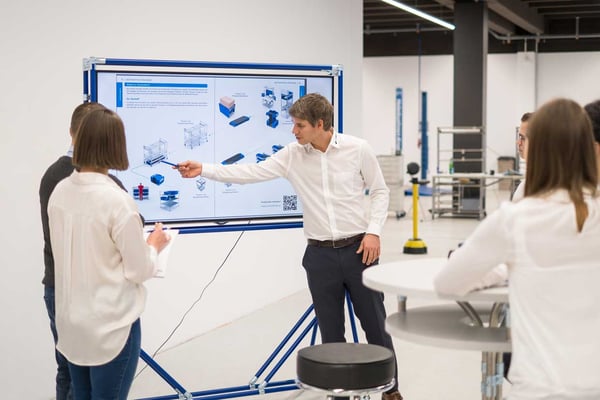
The basic principles of Lean Management include:
- Customer focus: The focus is on understanding the customer's customer needs and providing products or services that offer the highest customer value.
- Process orientation: Operations and processes are analyzed and continuously improved to increase efficiency and quality.
- Employee Involvement: All employees are encouraged to make suggestions for improvement and take responsibility for their work.
- Continuous improvement: A culture of continuous optimization is established through the use of methods such as Kaizen and PDCA.
What is Lean Production?
Lean production, also known as lean production system, refers specifically to the application of lean principles in production. It aims to minimize waste in the form of overproduction, inventory, waiting time, transportation, and other aspects to achieve efficient and flexible production.
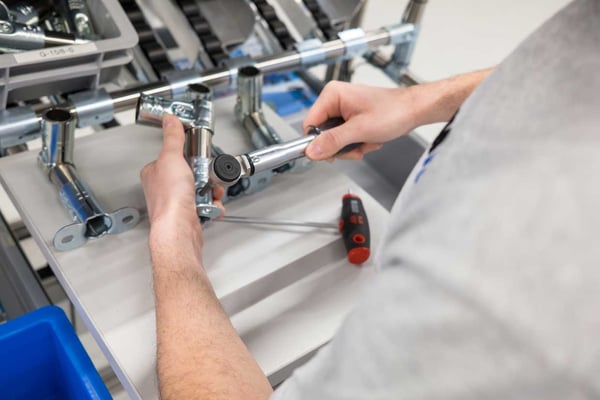
The characteristics of Lean Production include:
- Just-in-time production: Production is based on actual customer demand to avoid overproduction and inventory.
- Cycle time: Production is aligned to a steady rhythm to ensure a smooth flow of work.
- Small lot sizes: Reducing batch sizes increases flexibility and reduces lead time.
- Visualization and standardization: Work processes are visualized and standardized to enable transparency, efficiency and error prevention.
With the help of a value stream analysis, clues for optimization (= bottlenecks, wastes such as waiting times) and design of the entire production processes can be identified. The focus here is on the analysis of material flow and information flow. Both aspects play a central role in the "Production System" and must be harmonized holistically.
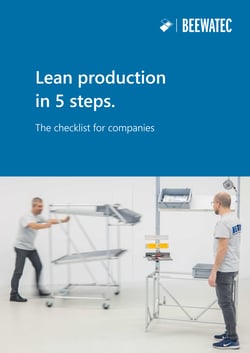
CHECKLIST
Lean Production in 5 steps
With our free checklist you have an overview of the steps for an efficient introduction of lean production in your company.
DOWNLOAD CHECKLISTCHECKLIST
Lean Production in 5 steps
With our free checklist you have an overview of the steps for an efficient introduction of lean production in your company.
3. Lean methods
There are a variety of lean methods that can help companies implement the lean concept. Here are some of the most popular lean methods:
-
5S Method
The 5S method includes the steps of sorting, systematizing, cleaning, standardizing and self-discipline. It aims to organize the workplace, reduce waste and increase efficiency. -
Value stream mapping
Value stream mapping provides a detailed visualization of the current state of material and information flow within a process. By identifying bottlenecks and waste, the value stream can be improved. -
Kaizen
Kaizen is the continuous improvement process that aims to implement small, incremental improvements. Through the participation of all employees, optimizations are sought in all areas of the company. -
Poka-Yoke
Poka-Yoke refers to the implementation of devices or techniques to prevent or minimize human error. The goal is to prevent errors and ensure error-free production. -
Kanban
Kanban is a system for visually controlling the flow of materials. It enables just-in-time production and ensures optimal use of resources. -
Value analysis
Value analysis focuses on examining products or processes to identify and eliminate unnecessary costs or steps while maximizing customer value. -
Six Sigma
Lean Six Sigma is also a method that helps companies improve their quality. Six Sigma uses mathematical approaches that take an analytical look at the causes and dependencies within the company (down to the smallest detail).
4. Lean principles
There are several lean principles that help companies implement the lean concept.
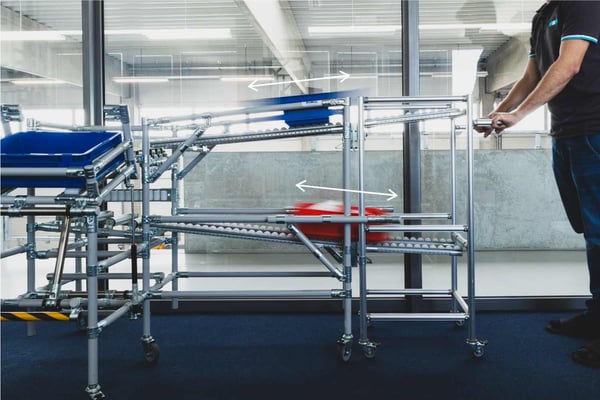
Here are the most important lean principles and what to look for when applying them:
-
Value orientation
Focus on value from the customer's point of view. Identify what is valuable to the customer and align your processes to that.
What to look for: Make sure your definition of value matches your customers' needs and expectations. Always keep customer value in focus when designing products, services and processes. -
Value stream orientation
Analyze the entire value stream, i.e. the flow of materials, information and activities along the value chain, and identify waste and bottlenecks.
What to look for: Take a holistic view of the value stream and identify waste in the form of overproduction, waiting times, transportation, over-processing and other areas. Work to optimize the value stream to enable smooth flow. -
Flow orientation
Ensure that the value stream flows smoothly, without interruptions, bottlenecks or waiting times.
What to look for: Eliminate obstacles that could impede flow. Identify bottlenecks and take action such as implementing pull systems and takt times. -
Pull principle
Produce only what the customer demands, at the moment it is needed. Avoid overproduction and excess inventory.
What to look for: Implement systems such as Kanban or just-in-time production to manage the flow of materials based on actual demand. Make sure production is closely linked to customer demand. -
Strive for perfection
Pursue a culture of continuous improvement and strive for excellence in all aspects of the business
What to look for: Create an atmosphere where employees are encouraged to suggest improvements and work continuously to perfect processes. Create mechanisms to measure and monitor progress and success.
When implementing lean principles, it is important that the entire organization, including management and employees, develop a shared understanding of and commitment to lean principles. Involving and training all employees, as well as reviewing and adapting lean initiatives, is critical to success.
5. Advantages and disadvantages of lean
Lean offers companies a variety of benefits, but there are also some potential drawbacks. Here are the main advantages and disadvantages of lean, as well as reasons why companies should invest in lean:
Advantages of Lean:
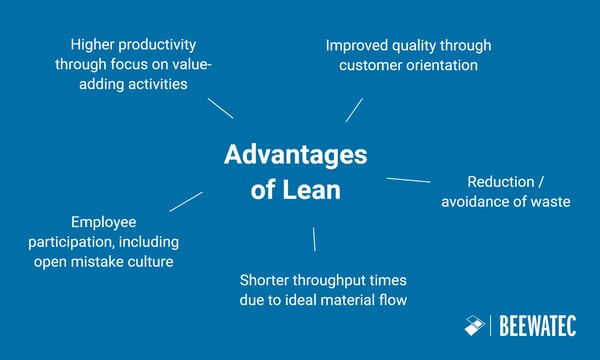
- Waste reduction: Lean aims to reduce waste in all its forms, resulting in cost savings and efficiency gains. By identifying and eliminating waste, companies can make the best use of their resources
- Improved quality: Lean principles such as error prevention, standardization and kaizen help to improve the quality of products and services. This leads to higher customer satisfaction and an improved company reputation.
- Higher productivity: By streamlining processes, ensuring the smooth flow of materials and information, and reducing bottlenecks, companies can increase productivity and accomplish more in less time.
- Shorter lead times: Lean makes it possible to shorten lead times from order to delivery. This leads to faster deliveries to customers and improved responsiveness to changing market conditions.
- Better employee engagement: Lean fosters a culture of employee participation and engagement. Employees are encouraged to suggest improvements and take responsibility for their work. This leads to a positive work environment and increased employee engagement.
Disadvantages of Lean:
- Time and resources required: Implementing Lean requires time, resources and investment. It may require extensive employee training, changes in work processes, and adjustments to organizational structure.
- Cultural challenges: Moving to a lean culture requires a change in mindset and broad acceptance within the organization. Some employees may have resistance to change, which can make implementation difficult.
Implementation of Lean Production - Be Lean, use BeeWaTec!
BeeWaTec offers innovative and flexible solutions for workplace design, storage and in-plant material flow. We work closely with our customers to develop optimal solutions and meet every requirement.
"We don't just sell components, we sell lean!" - Joachim Walter, CEO of the BeeWaTec Group
Our modular system of pipe racking system is the optimal solutions to implement the "Lean Concept" quickly, flexibly and cost-efficiently in our own production and value creation. The overriding goal of our customers is always to identify processes and harmonize processes. Through the flexibility and adaptability of our lean operating equipment, we also ensure flexibility and competitiveness in the future.
_Web.jpg?width=600&height=400&name=Beewatec042018-(31)_Web.jpg)
7. Conclusion
Lean is an extremely valuable philosophy and methodology to help companies optimize their processes, minimize waste, and maximize customer value.
By applying lean principles such as value orientation, value stream mapping, flow orientation, pull principle, and continuous improvement, companies can achieve a variety of benefits.
By implementing lean, companies can increase productivity, improve the quality of their products and services, reduce costs, shorten delivery times, and achieve high customer satisfaction. In addition, Lean fosters a culture of employee engagement, resulting in a positive work environment and increased employee engagement.
In an increasingly competitive and ever-changing business environment, companies should invest in Lean to strengthen their competitiveness and respond flexibly to new needs and demands.
You already have a concrete project?
As one of the leading providers of lean equipment manufacturing and lean production, we support you with hardware and know-how. Discover the possibilities of our modular system and benefit sustainably from more flexibility.
Need some more inspiration?
In our showroom you will find many clever solutions and successful projects. Use our experience for your process design. We will be happy to support you.
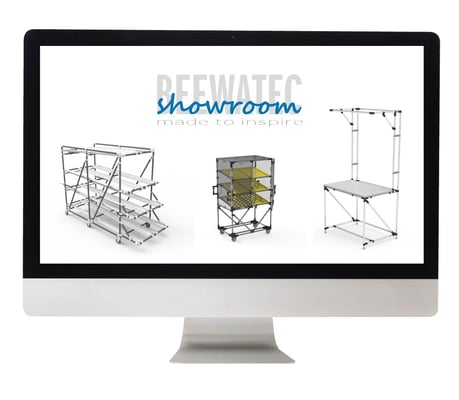
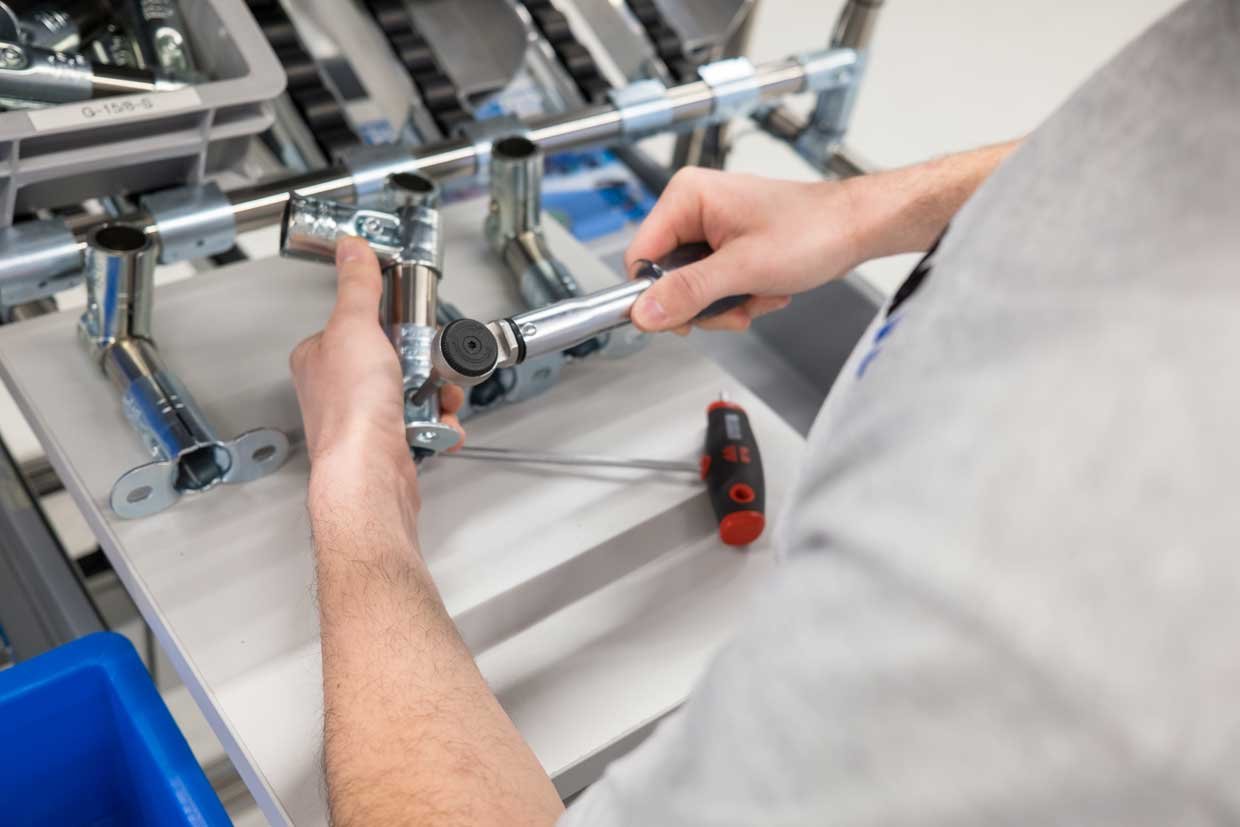


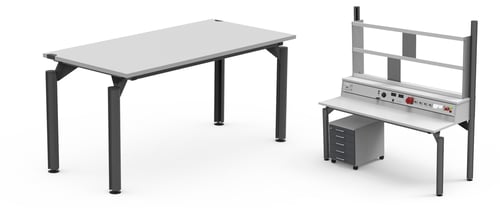
_Web_01_01.jpg?width=1240&name=Beewatec-3-(37)_Web_01_01.jpg)
